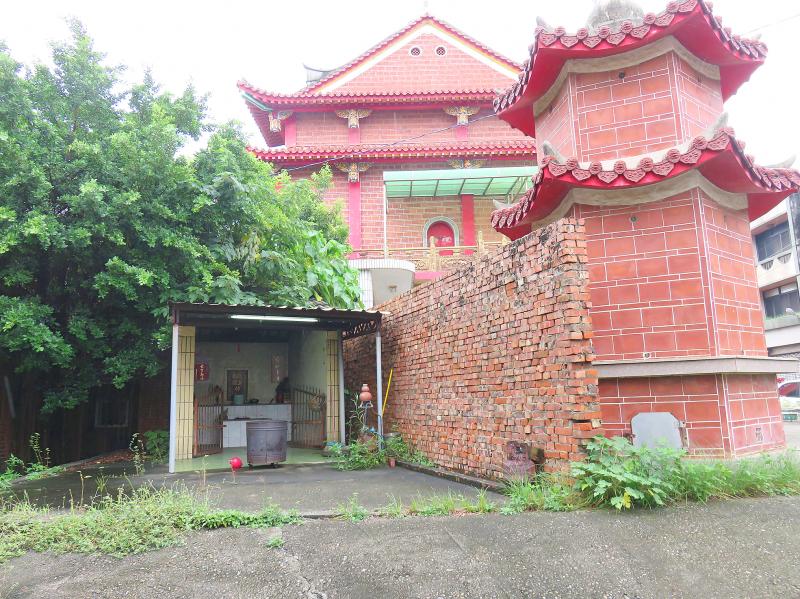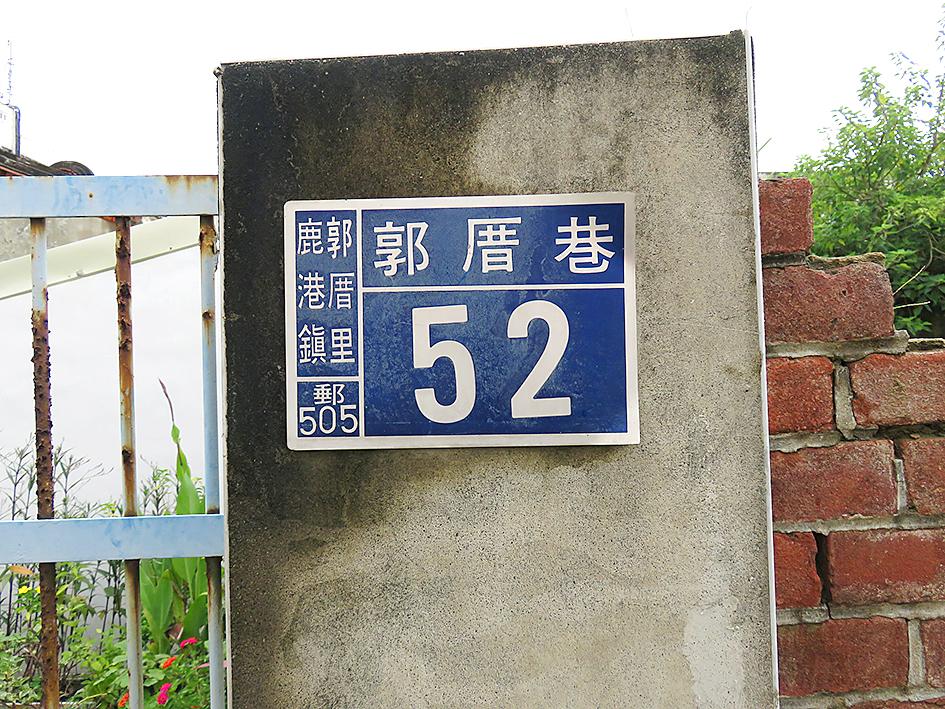One often hears that the people of Taiwan are 98 percent Han, a complicated cultural term that is often used to imply a certain genetic relationship as well. Yet among the pre-1949 population of Taiwan, roughly 45 percent are descended from immigrants from Quanzhou (泉州) in China. Who might these people be?
In medieval times Quanzhou was one of the world’s greatest ports, a melting pot of peoples from India and northeast, southeast and central Asia, along with Han and other peoples we now identify as “Chinese.” Merchants from Quanzhou competed in the southeast Asian textile trade, shipping cottons from India and silks from China, and their domination was so complete that in the pre-modern era commercial terms in many southeast Asian languages were either of Chinese or Indian origin. The wealthy Indian merchant community there erected a Hindu temple in Quanzhou, with Tamil merchants building temples to Shiva and Vishnu. It is worth noting that Quanzhou was so ignorant of Taiwan, just a few days sail away, that camphor was obtained from islands south of Philippines, though it existed in abundance in Taiwan.
MUSLIMS OF QUANZHOU

Photo: Michael Turton
Central Asia poured immigrants into the city. Quanzhou eventually hosted an enormous Muslim population, well over a hundred thousand in its heyday when something like a million people inhabited the sprawling port. Muslim and Nestorian Christian inscriptions are known, and outside what is now Fujian city, in Jinjiang, there is a Manichean temple now reconstructed as a Buddhist temple.
During the Yuan Dynasty the Mongols stationed foreign troops there, who were allied to the local Persian community. As the Yuan waned they rose against the Mongol leadership in a 10 year revolt known as the Ipsah rebellion. The immediate cause of this revolt in a city in what is now China was Muslim disapproval of the construction of a Hindu temple.
The Chinese settlers of Taiwan are often presented to outsiders as “Han” but it is striking to imagine all the ethnicities, identities and descent relationships that are swallowed up in that Borg-like identity. Surely in Taiwan there are Quanzhou-descended people with distant ancestors who were Persians Manicheans or Tamil merchants worshipping Shiva or ambitious Muslim traders from Central Asia.

Photo: Michael Turton
By the 14th century the Muslim communities, both Chinese and foreign, in Quanzhou were the most prosperous. Today in the area around Quanzhou are entire villages who claim descent from Arab merchants. Centuries later some of these families, fallen in wealth and prominence, but still Muslim, would make their way to Taiwan.
THE KUOS OF LUGANG TOWNSHIP
In Changhua County’s Lugang Township (鹿港) there is a place called Kuocuo Borough (郭厝). Early in the Qing the Kuos (郭) of Baiqi (百崎) outside Quanzhou sent a branch across the Strait to settle in Lugang. Six branches of the Kuos — four branches that are part of one lineage from Baiqi, one branch composed of Kuos who are not in the main branches, and a sixth branch composed of people with the Kuo surname who are not related to the Kuos of Baiqi (they come from Rihu and also trace their ancestry to the family’s mythical founder, the Tang General Kuo, Prefect of Fenyang, 汾陽) but who joined the family based on the common surname (common surnames are useful bases for relationships in Chinese society). These Kuos, who also sent family to settle in Philippines, began as Muslims, descendants of a Muslim merchant from Hangzhou. Today Baiqi is formally titled Baiqi Hui Ethnic Township (百崎回族鄉), in Huian (惠安) County in Quanzhou.

Photo: Michael Turton
By the 17th century these Kuos had lost their Islamic beliefs, though they are aware that they once were Muslims. The old among them still remember the purifying well outside the mosque in Lugang, both vanishing shortly before World War II. A few of the houses in the area have interesting architecture. This loss of religious identity is common among once-Muslim families in Taiwan. Though the island is often said to host 50,000 Muslims, there are many more families in Taiwan that were once Muslim and remember it only in ghostly ways, such as abstaining from eating pork before religious rituals. Most are now thoroughly “Han.” The Kuos of Lugang, for example, constructed a perfectly ordinary Chinese temple to honor their mythical ancestor, General Guo.
Japanese identities, more recent but systemically expunged by the Chinese Nationalist Party (KMT), are now fading as their holders die off. An old Taiwanese man once sang to me the Japanese national anthem, the Kimigayo, explaining carefully what each word meant, and sobbing his heart out as he did so. Seven decades after the Japanese gave up Taiwan, he still regarded himself as Japanese in his heart.
JAPANESE-ATAYAL CREOL
Such identities are generally well known to foreigners who have been here a while, but one lesser known Japanese-based identity is the Japanese-Atayal creole that emerged in Yilan in the 1930s. That creole, which uses many Japanese nouns but has grammar not known in either parent language, is not comprehensible to native speakers of Atayal or Japanese. The creole developed in language communities in Yilan into which Seediq and Atayal people had been shoved together by the Japanese, who regarded them as the same people since they spoke closely related languages. Peng Qiu, whose thesis is on these communities, argues that the language began as the two communities used Japanese pidgin as a lingua franca and later grew into a full-blown creole, likely the only Japanese-based creole in the world. Ironically, as Taiwanese aborigines reclaim their own identities, the burgeoning Atayal identity is erasing this creole. Soon, like so many other identities on Taiwan, it will become a ghost, perhaps preserved in rituals and phrases emptied of their original meanings.
Ghosts of aborigines past survive in many ways among the “Han.” A friend of mine told me his wife’s family referred to their grandmother using a word which they themselves did not know was aboriginal in origin. In Taichung’s Daya district (大雅), there are families that bury their dead in their backyard, an apparent echo of the aboriginal practice of burying the dead under the hearth. Local names like “old village” and “new village,” or “savage garden” and “savage road,” remind us who used to live there. Once, riding in the mountains, we stumbled across a gravesite that identified the man entombed therein as a “man of the land.” The grave was Chinese, but its occupant was likely an aborigine. A Shinto temple on the 149 south of Jhushan (竹山) houses graves whose dates indicate they likely house the remains of aborigines who were in the Japanese army, killed in the fighting on Okinawa.
These ghosts of identities past haunt us, still shaping our future here in Taiwan. If you listen closely to them, you will hear, not the clanging of chains, but the clamor for recognition of their contribution to building the modern identities that we call “Taiwanese.”
Long-time resident Michael Turton provides incisive commentary informed by three decades of living in and writing about Taiwan.

Exceptions to the rule are sometimes revealing. For a brief few years, there was an emerging ideological split between the Democratic Progressive Party (DPP) and Chinese Nationalist Party (KMT) that appeared to be pushing the DPP in a direction that would be considered more liberal, and the KMT more conservative. In the previous column, “The KMT-DPP’s bureaucrat-led developmental state” (Dec. 11, page 12), we examined how Taiwan’s democratic system developed, and how both the two main parties largely accepted a similar consensus on how Taiwan should be run domestically and did not split along the left-right lines more familiar in

This month the government ordered a one-year block of Xiaohongshu (小紅書) or Rednote, a Chinese social media platform with more than 3 million users in Taiwan. The government pointed to widespread fraud activity on the platform, along with cybersecurity failures. Officials said that they had reached out to the company and asked it to change. However, they received no response. The pro-China parties, the Chinese Nationalist Party (KMT) and Taiwan People’s Party (TPP), immediately swung into action, denouncing the ban as an attack on free speech. This “free speech” claim was then echoed by the People’s Republic of China (PRC),

As I finally slid into the warm embrace of the hot, clifftop pool, it was a serene moment of reflection. The sound of the river reflected off the cave walls, the white of our camping lights reflected off the dark, shimmering surface of the water, and I reflected on how fortunate I was to be here. After all, the beautiful walk through narrow canyons that had brought us here had been inaccessible for five years — and will be again soon. The day had started at the Huisun Forest Area (惠蓀林場), at the end of Nantou County Route 80, north and east

Specialty sandwiches loaded with the contents of an entire charcuterie board, overflowing with sauces, creams and all manner of creative add-ons, is perhaps one of the biggest global food trends of this year. From London to New York, lines form down the block for mortadella, burrata, pistachio and more stuffed between slices of fresh sourdough, rye or focaccia. To try the trend in Taipei, Munchies Mafia is for sure the spot — could this be the best sandwich in town? Carlos from Spain and Sergio from Mexico opened this spot just seven months ago. The two met working in the